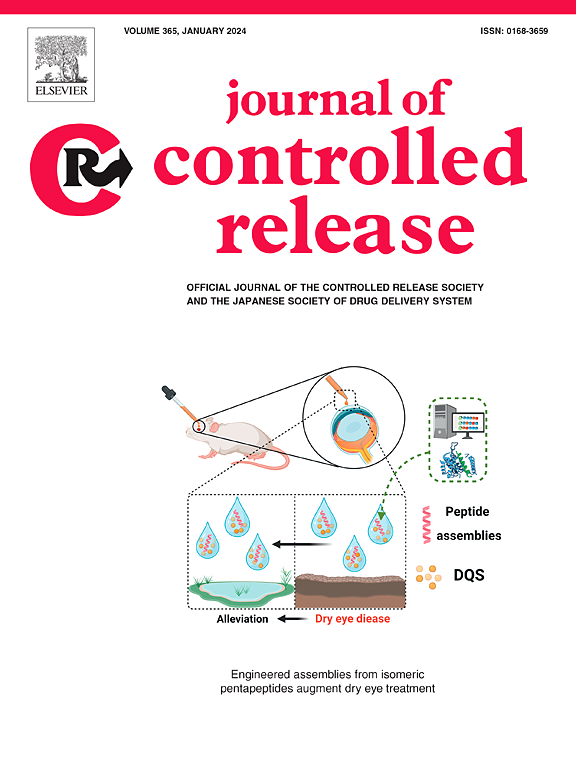Hydrophobic ion pairing enables co-loading of water-soluble drugs in polymeric micelles
IF 10.5
1区 医学
Q1 CHEMISTRY, MULTIDISCIPLINARY
引用次数: 0
Abstract
Polymeric micelles are widely used for the delivery of hydrophobic drugs. However, several highly potent and ubiquitously used anticancer drugs are water-soluble, complicating their (co-) formulation in polymeric micelles without having to chemically modify them. We here explore hydrophobic ion pairing to enable the co-delivery of the water-soluble anthracycline chemotherapy drug doxorubicin and the angiotensin II receptor antagonist telmisartan (a clinically used antihypertensive drug that has shown promising (pre-) clinical outcomes in combination with anthracyclines). We show that hydrophobic ion pairing of doxorubicin and telmisartan promotes the co-encapsulation of both drugs in π electron-stabilized [PEG-b-p(HPMAm-Bz)]-based polymeric micelles. The cytotoxic activity of doxorubicin is retained, and the dual drug-loaded micelles display enhanced antitumor activity in vivo as compared to the combination of the free drugs, while also exhibiting good tolerability. Taken together, this work provides proof-of-concept for hydrophobic ion pairing as a promising formulation strategy to promote multidrug nanomedicine and drug combination therapy.

求助全文
约1分钟内获得全文
求助全文
来源期刊

Journal of Controlled Release
医学-化学综合
CiteScore
18.50
自引率
5.60%
发文量
700
审稿时长
39 days
期刊介绍:
The Journal of Controlled Release (JCR) proudly serves as the Official Journal of the Controlled Release Society and the Japan Society of Drug Delivery System.
Dedicated to the broad field of delivery science and technology, JCR publishes high-quality research articles covering drug delivery systems and all facets of formulations. This includes the physicochemical and biological properties of drugs, design and characterization of dosage forms, release mechanisms, in vivo testing, and formulation research and development across pharmaceutical, diagnostic, agricultural, environmental, cosmetic, and food industries.
Priority is given to manuscripts that contribute to the fundamental understanding of principles or demonstrate the advantages of novel technologies in terms of safety and efficacy over current clinical standards. JCR strives to be a leading platform for advancements in delivery science and technology.
 求助内容:
求助内容: 应助结果提醒方式:
应助结果提醒方式:


